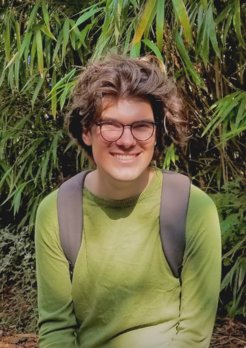
Joris Josiek (France)
joris.josiek @ uni-heidelberg.de
Towards a joined picture of evolved massive stars: combining insights from stellar structure and evolution modelling
Through their powerful winds and large radiative output, massive stars play a central role in shaping the world around them. They are the only sources of heavy elements, many of which are essential to our life on Earth, and their strong ionizing flux is thought to be a possible driver of cosmic reionization.
In order to understand the impact of massive stars in the universe, one needs accurate models of their evolution across time, which is achieved using codes specialized in stellar evolution. However, one major shortcoming of all stellar evolution codes is their lack of a physically consistent atmosphere including detailed raditative transfer, rendering these codes unable to predict stellar spectra, electronic population numbers, atmospheric temperature stratification or mass loss rates, which are vital quantities for interpreting observations and for computing the evolution itself. These problems are then typically solved by using separate codes which use a distinct set of physical and numerical assumptions to compute a detailed stellar atmosphere.
Despite the fact that stellar evolution and stellar atmospheres are modeled separately, their deep interconnectedness in massive stars hints at possible benefits of a more unified approach. It is the goal of my PhD to investigate this possibility further, and establish links between these two modelling techniques. I will use the Geneva stellar evolution code (GENEC) to compute tracks of massive stars and then compare the computed stellar structure to the output of detailed atmosphere models using the Potsdam Wolf-Rayet stellar atmospheres code (PoWR). The first steps will involve identifying discrepancies between the predictions of the two codes, understanding their underlying origin, and using this knowledge to establish a more accurate way to incorporate results from evolution and atmosphere models. Ultimately, the long-term aim of this endeavor will be to create an interface between the two codes that would enable us to join the evolutionary and the atmospheric codes into a single, simultaneous and physically consistent computation.
Supervisor: Andreas Sander (ARI)
